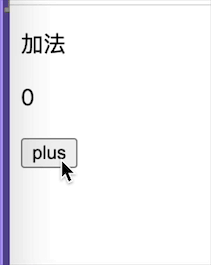原文地址:https://blog.coding.net/blog/React-server-rendering
React 提供了两个方法renderToString和renderToStaticmarkup用来将组件(Virtual DOM)输出成 HTML 字符串,这是 React 服务器端渲染的基础,它移除了服务器端对于浏览器环境的依赖,所以让服务器端渲染变成了一件有吸引力的事情。
服务器端渲染除了要解决对浏览器环境的依赖,还要解决两个问题:
- 前后端可以共享代码
- 前后端路由可以统一处理
React 生态提供了很多选择方案,这里我们选用Redux和react-router来做说明。
Redux
Redux提供了一套类似 Flux 的单向数据流,整个应用只维护一个 Store,以及面向函数式的特性让它对服务器端渲染支持很友好。
2 分钟了解 Redux 是如何运作的
关于 Store:
- 整个应用只有一个唯一的 Store
- Store 对应的状态树(State),由调用一个 reducer 函数(root reducer)生成
- 状态树上的每个字段都可以进一步由不同的 reducer 函数生成
- Store 包含了几个方法比如
dispatch,getState来处理数据流 - Store 的状态树只能由
dispatch(action)来触发更改
Redux 的数据流:
- action 是一个包含
{type,payload}的对象 - reducer 函数通过
store.dispatch(action)触发 - reducer 函数接受
(state,action)两个参数,返回一个新的 state - reducer 函数判断
action.type然后处理对应的action.payload数据来更新状态树
所以对于整个应用来说,一个 Store 就对应一个 UI 快照,服务器端渲染就简化成了在服务器端初始化 Store,将 Store 传入应用的根组件,针对根组件调用renderToString就将整个应用输出成包含了初始化数据的 HTML。
react-router
react-router通过一种声明式的方式匹配不同路由决定在页面上展示不同的组件,并且通过 props 将路由信息传递给组件使用,所以只要路由变更,props 就会变化,触发组件 re-render。
假设有一个很简单的应用,只有两个页面,一个列表页/list和一个详情页/item/:id,点击列表上的条目进入详情页。
可以这样定义路由,./routes.js
import React from 'react';
import { Route } from 'react-router';
import { List,Item } from './components';
// 无状态(stateless)组件,一个简单的容器,react-router 会根据 route
// 规则匹配到的组件作为 `props.children` 传入
const Container = (props) => {
return (
<div>{props.children}</div>
);
};
// route 规则:
// - `/list` 显示 `List` 组件
// - `/item/:id` 显示 `Item` 组件
const routes = (
<Route path="/" component={Container} >
<Route path="list" component={List} />
<Route path="item/:id" component={Item} />
</Route>
);
export default routes;
从这里开始,我们通过这个非常简单的应用来解释实现服务器端渲染前后端涉及的一些细节问题。
Reducer
Store 是由 reducer 产生的,所以 reducer 实际上反映了 Store 的状态树结构
./reducers/index.js
import listReducer from './list';
import itemReducer from './item';
export default function rootReducer(state = {},action) {
return {
list: listReducer(state.list,action),
item: itemReducer(state.item,action)
};
}
rootReducer的state参数就是整个 Store 的状态树,状态树下的每个字段对应也可以有自己的
reducer,所以这里引入了listReducer和itemReducer,可以看到这两个 reducer
的 state 参数就只是整个状态树上对应的list和item字段。
具体到./reducers/list.js
const initialState = [];
export default function listReducer(state = initialState,action) {
switch(action.type) {
case 'FETCH_LIST_SUCCESS': return [...action.payload];
default: return state;
}
}
list 就是一个包含 items 的简单数组,可能类似这种结构:[{id:0,name:'first item'},{id:1,name:'second item'}],从'FETCH_LIST_SUCCESS'的action.payload获得。
然后是./reducers/item.js,处理获取到的 item 数据
const initialState = {};
export default function listReducer(state = initialState,action) {
switch(action.type) {
case 'FETCH_ITEM_SUCCESS': return [...action.payload];
default: return state;
}
}
Action
对应的应该要有两个 action 来获取 list 和 item,触发 reducer 更改 Store,这里我们定义fetchList和fetchItem两个 action。
./actions/index.js
import fetch from 'isomorphic-fetch';
export function fetchList() {
return (dispatch) => {
return fetch('/api/list')
.then(res => res.json())
.then(json => dispatch({ type: 'FETCH_LIST_SUCCESS',payload: json }));
}
}
export function fetchItem(id) {
return (dispatch) => {
if (!id) return Promise.resolve();
return fetch(`/api/item/${id}`)
.then(res => res.json())
.then(json => dispatch({ type: 'FETCH_ITEM_SUCCESS',payload: json }));
}
}
isomorphic-fetch是一个前后端通用的 Ajax 实现,前后端要共享代码这点很重要。
另外因为涉及到异步请求,这里的 action 用到了 thunk,也就是函数,redux 通过thunk-middleware来处理这类 action,把函数当作普通的 action dispatch 就好了,比如dispatch(fetchList())
Store
我们用一个独立的./store.js,配置(比如 Apply Middleware)生成 Store
import { createStore } from 'redux';
import rootReducer from './reducers';
// Apply middleware here
// ...
export default function configureStore(initialState) {
const store = createStore(rootReducer,initialState);
return store;
}
react-redux
接下来实现<List>,<Item>组件,然后把 redux 和 react 组件关联起来,具体细节参见react-redux
./app.js
import React from 'react';
import { render } from 'react-dom';
import { Router } from 'react-router';
import createbrowserHistory from 'history/lib/createbrowserHistory';
import { Provider } from 'react-redux';
import routes from './routes';
import configureStore from './store';
// `__INITIAL_STATE__` 来自服务器端渲染,下一部分细说
const initialState = window.__INITIAL_STATE__;
const store = configureStore(initialState);
const Root = (props) => {
return (
<div>
<Provider store={store}>
<Router history={createbrowserHistory()}>
{routes}
</Router>
</Provider>
</div>
);
}
render(<Root />,document.getElementById('root'));
至此,客户端部分结束。
Server Rendering
接下来的服务器端就比较简单了,获取数据可以调用 action,routes 在服务器端的处理参考react-router server rendering,在服务器端用一个match方法将拿到的 request url 匹配到我们之前定义的 routes,解析成和客户端一致的 props 对象传递给组件。
./server.js
import express from 'express';
import React from 'react';
import { renderToString } from 'react-dom/server';
import { RoutingContext,match } from 'react-router';
import { Provider } from 'react-redux';
import routes from './routes';
import configureStore from './store';
const app = express();
function renderFullPage(html,initialState) {
return `
<!DOCTYPE html>
<html lang="en">
<head>
<Meta charset="UTF-8">
</head>
<body>
<div id="root">
<div>
${html}
</div>
</div>
<script>
window.__INITIAL_STATE__ = ${JSON.stringify(initialState)};
</script>
<script src="/static/bundle.js"></script>
</body>
</html>
`;
}
app.use((req,res) => {
match({ routes,location: req.url },(err,redirectLocation,renderProps) => {
if (err) {
res.status(500).end(`Internal Server Error ${err}`);
} else if (redirectLocation) {
res.redirect(redirectLocation.pathname + redirectLocation.search);
} else if (renderProps) {
const store = configureStore();
const state = store.getState();
Promise.all([
store.dispatch(fetchList()),
store.dispatch(fetchItem(renderProps.params.id))
])
.then(() => {
const html = renderToString(
<Provider store={store}>
<RoutingContext {...renderProps} />
</Provider>
);
res.end(renderFullPage(html,store.getState()));
});
} else {
res.status(404).end('Not found');
}
});
});
服务器端渲染部分可以直接通过共用客户端store.dispatch(action)来统一获取 Store 数据。另外注意renderFullPage生成的页面 HTML 在 React 组件 mount 的部分(<divid="root">),前后端的 HTML 结构应该是一致的。然后要把store的状态树写入一个全局变量(__INITIAL_STATE__),这样客户端初始化 render 的时候能够校验服务器生成的 HTML 结构,并且同步到初始化状态,然后整个页面被客户端接管。
最后关于页面内链接跳转如何处理?
react-router 提供了一个<Link>组件用来替代<a>标签,它负责管理浏览器 history,从而不是每次点击链接都去请求服务器,然后可以通过绑定onClick事件来作其他处理。
比如在/list页面,对于每一个 item 都会用<Link>绑定一个 route url:/item/:id,并且绑定onClick去触发dispatch(fetchItem(id))获取数据,显示详情页内容。




